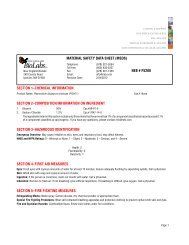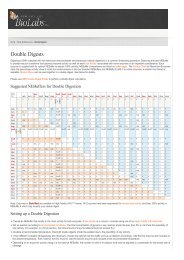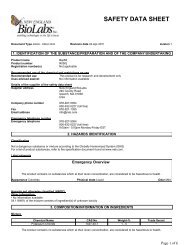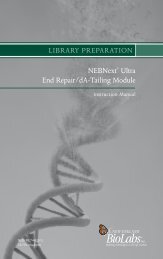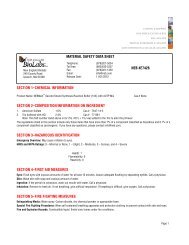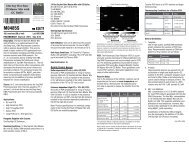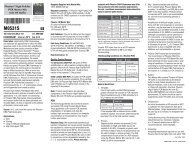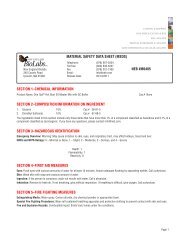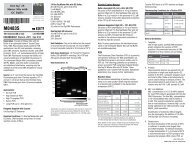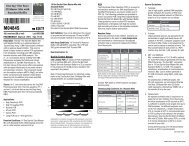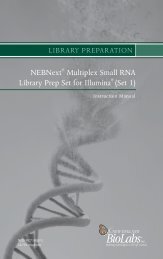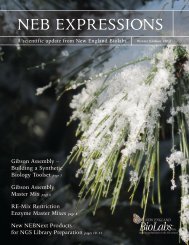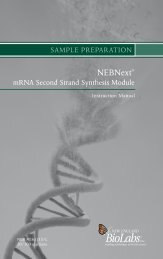Manual - New England Biolabs
Manual - New England Biolabs
Manual - New England Biolabs
Create successful ePaper yourself
Turn your PDF publications into a flip-book with our unique Google optimized e-Paper software.
6<br />
amounts of RSL1 (Figure 4). Even with a longer exposure, no protein is observed<br />
in non-induced cells (Figure 4, Lane 5), further demonstrating the degree of control<br />
of over expression. Induced expression can be seen in as little as 1 hour, reaching<br />
a maximum level between 48 and 72 hours (Figure 5). The RheoSwitch System is<br />
very responsive to RSL1 and its removal from the medium will rapidly turn off gene<br />
expression (Figure 6).<br />
RSL1 ligand is a synthetic diacylhydrazine, [N-(2-ethyl-3-methoxybenzoyl)-N´-<br />
(3,5-dimethylbenzoyl)-N´-tert-butylhydrazine] (Figure 1) (4). It is one of a family of<br />
compounds that have been found to act as non-steroidal ecdysone agonists and can<br />
function as gene inducers (4,5). RSL1 binds tightly and selectively to RheoReceptor-1,<br />
altering its conformation so that it releases bound negative regulatory cofactors and<br />
stabilizes the RheoReceptor/RheoActivator heterodimer. RSL1 is not a steroid—it is<br />
invisible to mammalian nuclear receptors and has been shown to be inert within all<br />
cell lines tested to date. The result is an inducible system that specifically controls the<br />
gene of interest without unwanted effects on the host cells.<br />
O<br />
O<br />
N<br />
H<br />
N<br />
Figure 1: Chemical structure of RheoSwitch<br />
Ligand RSL1 (MW=382.5 daltons).<br />
O



